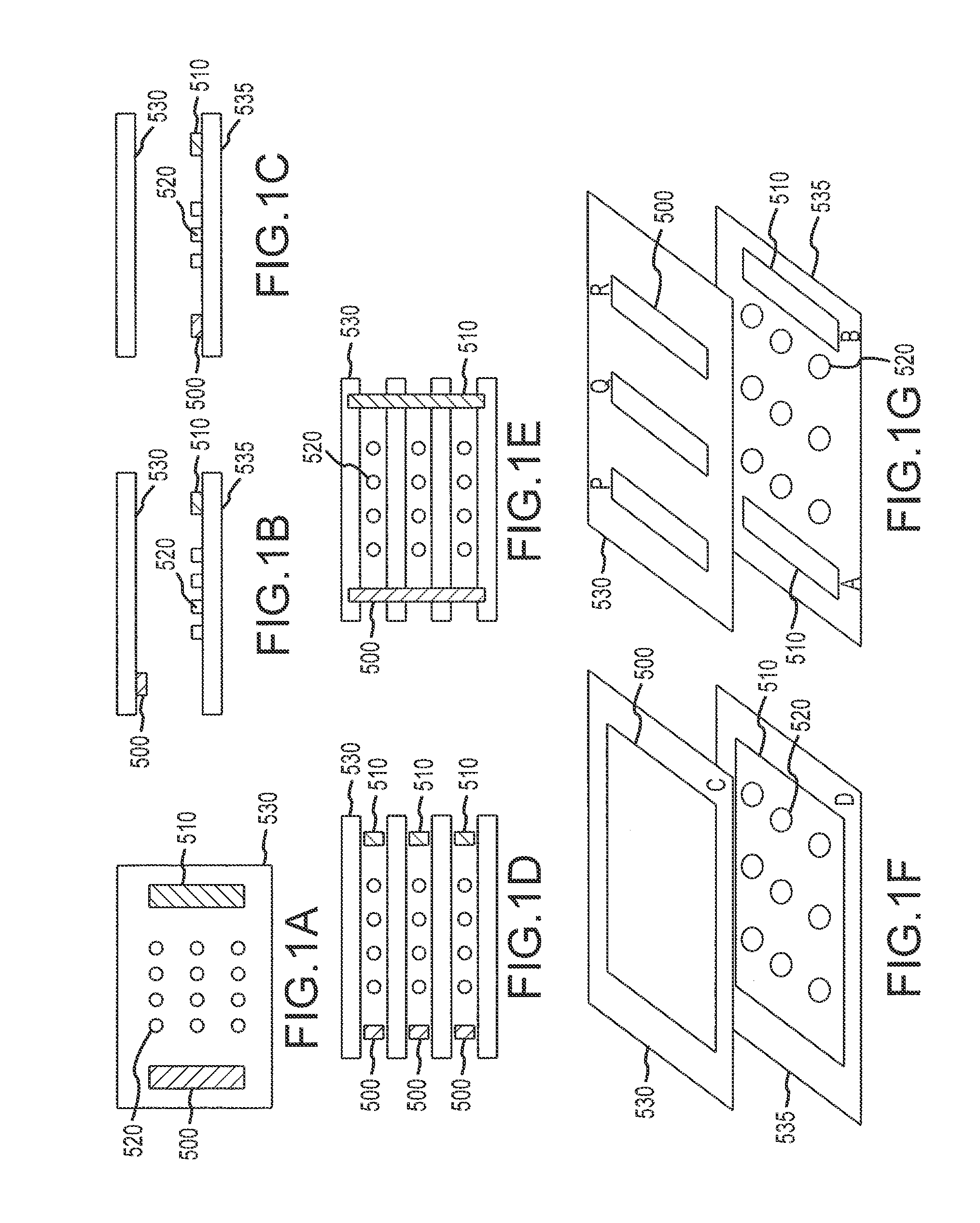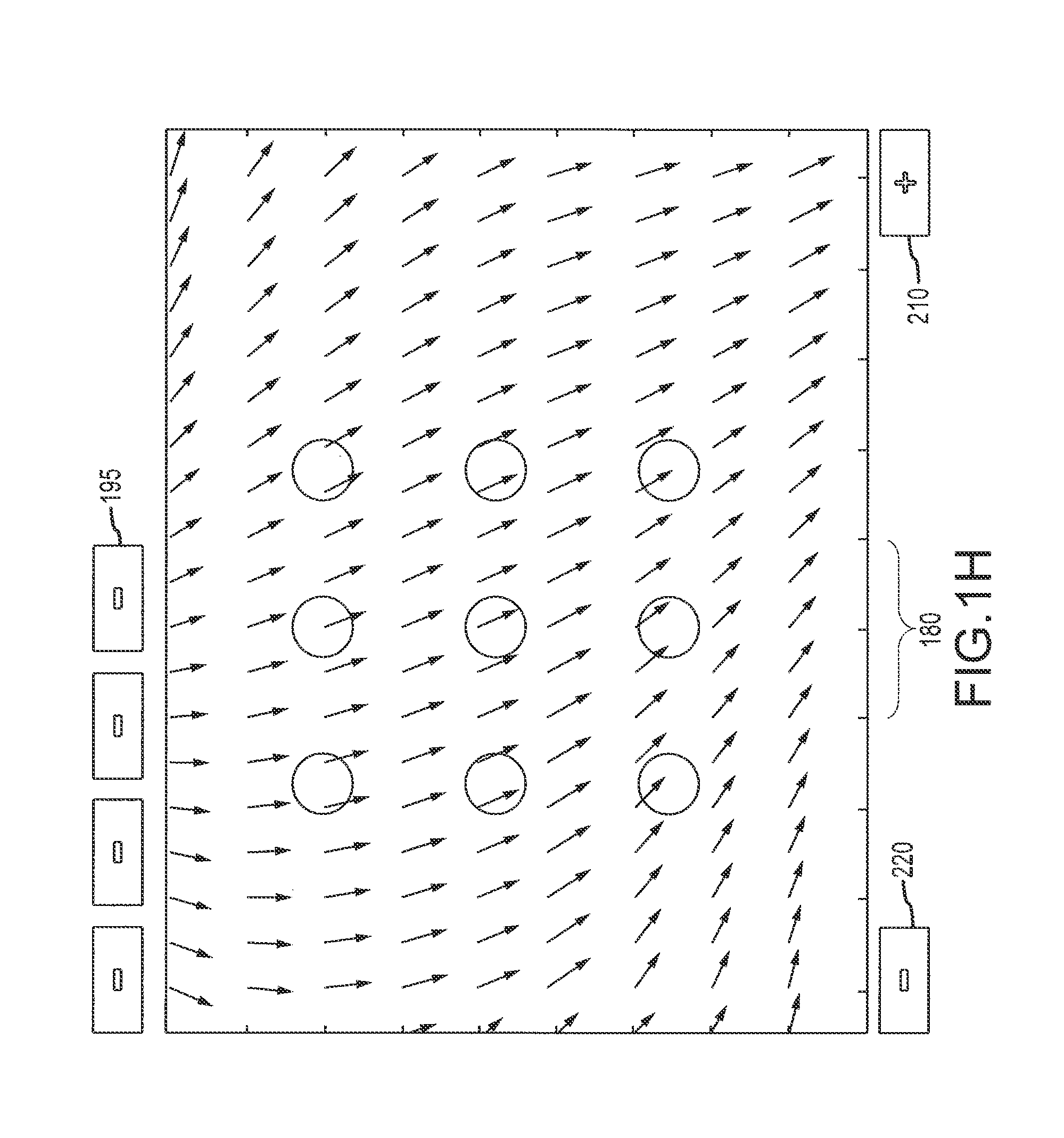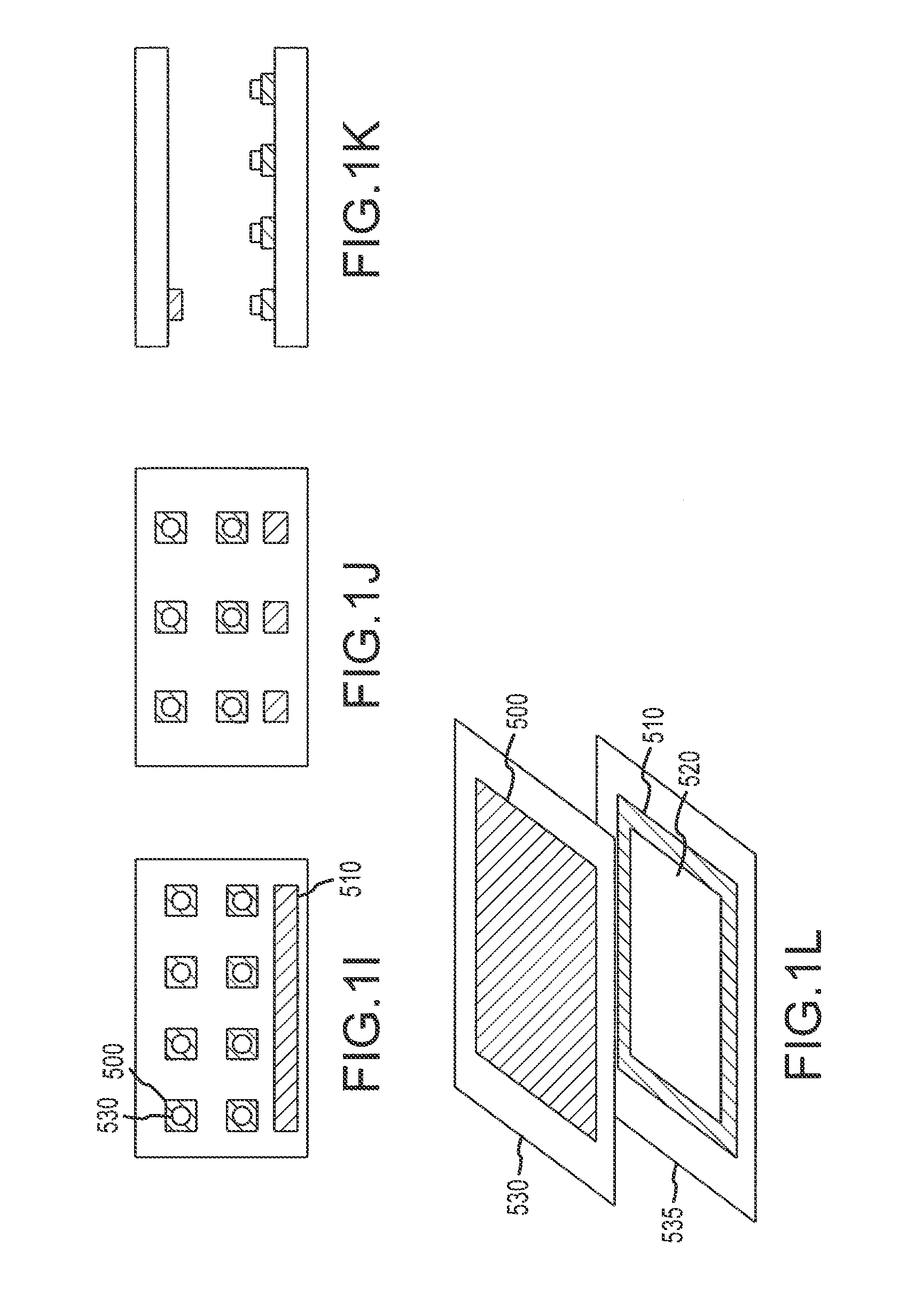Rapid microbial detection and antimicrobial susceptibility testing
a technology of microbial susceptibility testing and microbial detection, which is applied in the direction of biochemistry apparatus and processes, instruments, material analysis, etc., can solve the problems of not being able to provide the attending physician with specific diagnostic information, unable to significantly improve the outcomes of approximately 87% of patients so treated, and unable to change from ineffective to effective therapy.
- Summary
- Abstract
- Description
- Claims
- Application Information
AI Technical Summary
Problems solved by technology
Method used
Image
Examples
example 1
Electrokinetic Concentration
[0365]A flow cell was constructed by sandwiching two ITO modified glass microscope slides between a plastic laminate structure forming a 4 channel flow cell as illustrated in FIG. 50. The distance between the slide surfaces is approximately 500 microns. The bottom ITO slide was precoated with amine reactive OptiChem (Accelr8) and chemically modified with diethylene triamine (DETA) to yield a cationic bacteria capture surface.
[0366]A mixture of 1×107 CFU / ml of Staphylococcus aureus in 10 mM hydroquinone, 10 mM DTT, and 10 mM CAPS pH 6.5 was injected into a flow chamber. A potential difference (1.6 V) was applied across the ITO slides for approximately 3 minutes to surface concentrate and bind the bacteria to the DETA OptiChem modified ITO electrode. Photomicrographs of the surface of the anode before the application of the potential and 50 seconds later show the presence of the electrokinetically concentrated S. aureus microorganisms. The number of bacteri...
example 2
Microorganism Growth
[0367]The redox solution from Example 1 was replaced with tryptic soy growth media and incubated at 37 C on an inverted microscope to establish detectable growth of bacteria bound to DETA surface. Photomicrographs of the S. aureus at the beginning of growth and after different incubation times were taken (data not shown). The photomicrographs were taken with phase optics, and the flare surrounding the bacteria indicated the presence of additional bacteria resulting from cell division of the original bacteria. Thus bacterial growth ca follow electrokinetic concentration.
example 3
AOA Susceptibility
[0368]Bacteria concentrated and grown as in Examples 1 and 2 were challenged by 5 micrograms / ml of oxacillin to which the S. aureus strain used was susceptible. Simultaneous with the administration of oxacillin was the administration of 10 micromolar propidium iodide, which is excluded from live cells, and thus whose presence in fluorescence images is indicative of cell death. Photomicrographs of the bacteria at the beginning of AOA treatment were taken, under phase contrast and fluorescence microscopy, and additional images were taken one hour later (data not shown). There was a large increase in fluorescence which indicated the large amount of cell death from the administration of oxacillin.
PUM
| Property | Measurement | Unit |
|---|---|---|
| time | aaaaa | aaaaa |
| volume | aaaaa | aaaaa |
| volume | aaaaa | aaaaa |
Abstract
Description
Claims
Application Information
 Login to view more
Login to view more - R&D Engineer
- R&D Manager
- IP Professional
- Industry Leading Data Capabilities
- Powerful AI technology
- Patent DNA Extraction
Browse by: Latest US Patents, China's latest patents, Technical Efficacy Thesaurus, Application Domain, Technology Topic.
© 2024 PatSnap. All rights reserved.Legal|Privacy policy|Modern Slavery Act Transparency Statement|Sitemap



